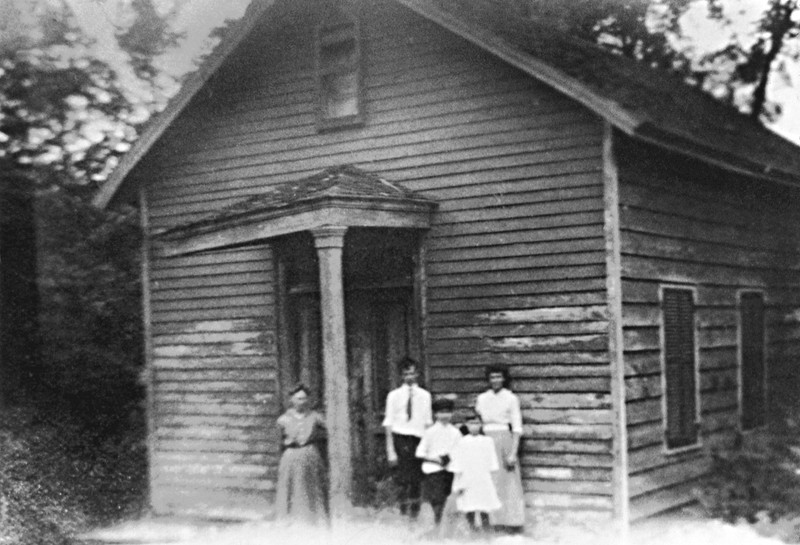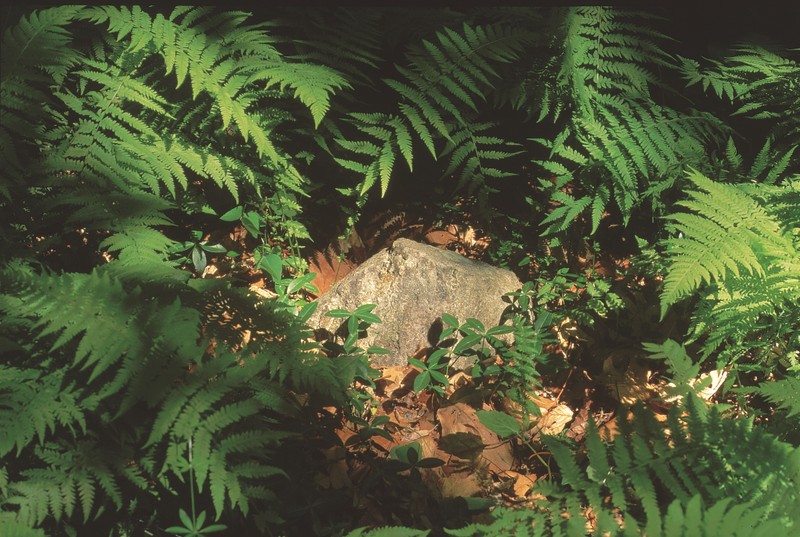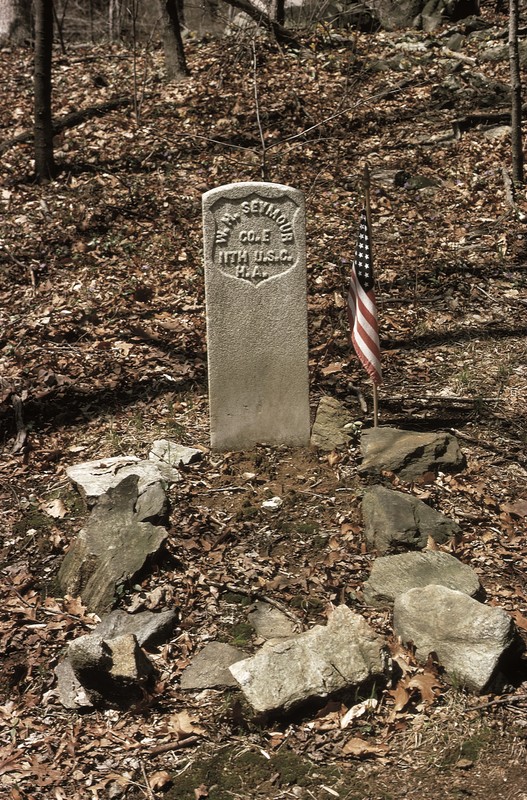Stony Hill Cemetery
Introduction
Text-to-speech Audio
Images
Old Colored Church on Buckout Road

Unlettered Gravestone Among Ferns

Veteran's Grave

Backstory and Context
Text-to-speech Audio
While there is no definitive date of establishment for the community known as “The Hills,” it is accepted that shortly after the American Revolution (1765-1783) “members of the Society of Friends and the Methodist Episcopal Church freed their slaves.”1 Before the Emancipation Proclamation of 1863, few owners sought to free their slaves in the same manner as the Society of Friends, also known as Quakers. In the late 1700’s, the Quakers in Westchester increasingly felt that “slavery was inconsistent with their religious beliefs,”2 and because of that they emancipated all of those that had endured serving the will of others throughout their lives. The Quakers also provided them with land to use as they pleased. “This marked the beginning of the Hills, a thriving 19th-century community of free African-Americans, one of the oldest in the nation.”3
The newly emancipated slaves settled what was known as “rough lands,” mostly rocky uplands. Despite the difficulty in transforming the land into a habitable area, they were able to establish a thriving community, co-existing with their nearby white neighbors. Residents of this community were not rich, yet their close-knit families would go on to form the strong foundations of a support network that helped protect members from hardships. Over the decades, the community continued to grow from these foundations, reaching around two hundred members by 1860. The community featured many houses, a one-room schoolhouse, a church, and a six-acre cemetery.
The cemetery in the community, commonly known as “Stony Hills Cemetery” features two hundred known graves, but many believe there could be as many as four hundred graves. Because fieldstones were often used to mark the graves, it is hard to determine what was intended as a grave marker and what stones were naturally occurring. Most of the people in the community could not afford to have an engraved headstone for their family member. Many stones (with the exception of seven) have no inscriptions, making it difficult to determine the total number of burial sites.
The seven inscribed headstones are mostly associated with men that fought for the Union during the Civil War (1861-1865). It is believed that anywhere from 32-34 men enlisted, mostly with Connecticut's 29th Colored Infantry, but only seven inscribed headstones stand in the cemetery; “and four of these are standard federal markers issued to veterans of the Civil War.”4 The additional three marked stones are assumed to belong to a couple and the last most likely belonging to a labor organization employee by the name of Harvey Seymour.
Other factors for the uncertainty of the number of graves include issues over land ownership, vegetation overgrowth and poor upkeep of the cemetery, and possible looting's from the site over the years. Many work to find a resolution for the site today in order to maintain and preserve what is left.
Cite This Entry
Ryan Dillon on behalf of Westchester County Historical Society and Barbara Davis. "Stony Hill Cemetery ." Clio: Your Guide to History. February 13, 2020. Accessed March 31, 2025. https://theclio.com/entry/93853
Sources
- Raftery, Patrick . The Cemeteries of Westchester County . Volume II. Elmsford , NY. Westchester Historical Society , 2011.
- Keller, Lisa . "Freedom in Death." The New York Times (NY) November 6th 2005.
- Keller, Lisa . "Freedom in Death." The New York Times (NY) November 6th 2005.
- Williams, Gray. Picturing Our Past: National Register Sites in Westchester County . Elmsford , NY. Westchester County Historical Society , 2003.
Williams, Gray. Picturing Our Past: National Register Sites in Westchester County . Elmsford , NY. Westchester County Historical Society , 2003.
Williams, Gray. Picturing Our Past: National Register Sites in Westchester County . Elmsford , NY. Westchester County Historical Society , 2003.
Williams, Gray. Picturing Our Past: National Register Sites in Westchester County . Elmsford , NY. Westchester County Historical Society , 2003.

